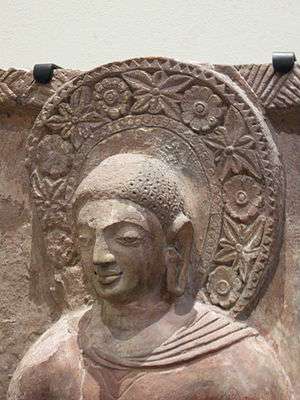Kahu-Jo-Darro
Kahu-Jo-Darro is ancient Buddhist archaeological site near Mirpurkhas, Pakistan. Excavations revealed a Buddhist stupa from the site. The ancient site is spread over 30 acres (120,000 m2).
General John Jacob, the acting British Commissioner in Sindh was first to be attracted to the site in the 19th century. His excavations found a vase of fine earthenware containing some pieces of crystal and amethyst, which was sent to the Karachi Museum.[1] The stupa was decorated using terracotta sculptures representing the Buddha.[2]> The artwork is similar to that seen at Sarnath and at Mathura. Clay tablets containing the Buddhist formula "Ye Dharma Hetu" in 7th-8th script were also found.[3]
The stupa is now said to be in a poor condition. The bricks have been taken away causing deliberate destruction.[4]
See also
References
- ↑ Revised lists of antiquarian remains in the Bombay Presidency: and the native states of Baroda, Palanpur, Radhanpur, Kathiawad, Kachh, Kolhapur, and the southern Maratha minor states, Volume 16 of [Reports]: New imperial series, Archaeological Survey of India, James Burgess, Henry Cousens, Printed at the Government central press, 1897, p. 215
- ↑ Vakataka - Gupta Age Circa 200-550 A.D. edited by Ramesh Chandra Majumdar, Anant Sadashiv Altekar, Motilal Banarsidass Publ., 1967, p. 435
- ↑ The Indian Historical Quarterly - Volumes 32-33, 1956, Page 182
- ↑ Sindh, Past, Present and Future, Fahmåidah òHusainu, University of Karachi. Shāha ʻAbdullat̤īfu Bhiṭāʼī Caʼir, University of Sind. Institute of Sindology, Shah Abdul Latif Bhitai Chair, University of Karachi, 2006, p. 230
